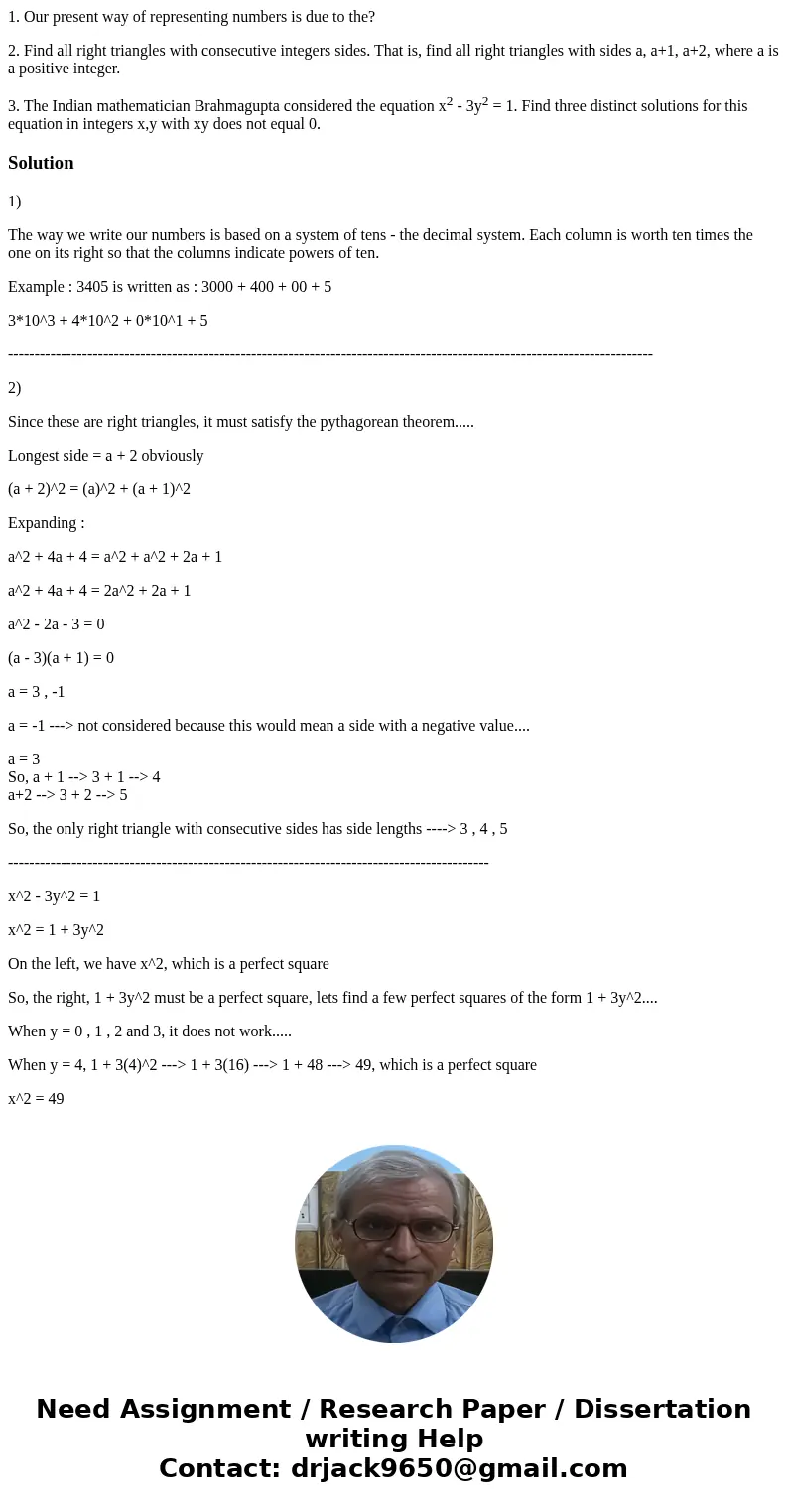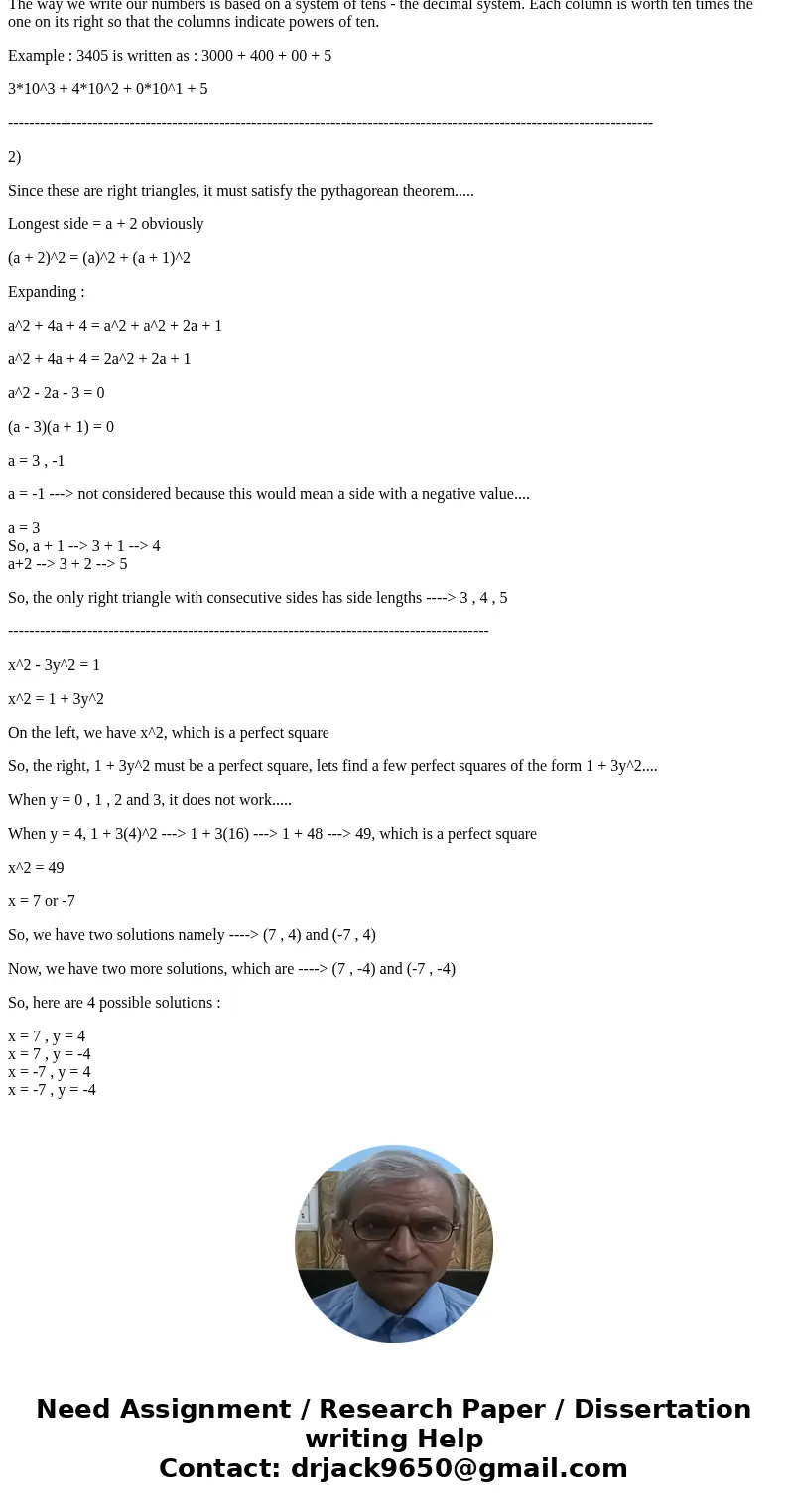1 Our present way of representing numbers is due to the 2 Fi
1. Our present way of representing numbers is due to the?
2. Find all right triangles with consecutive integers sides. That is, find all right triangles with sides a, a+1, a+2, where a is a positive integer.
3. The Indian mathematician Brahmagupta considered the equation x2 - 3y2 = 1. Find three distinct solutions for this equation in integers x,y with xy does not equal 0.
Solution
1)
The way we write our numbers is based on a system of tens - the decimal system. Each column is worth ten times the one on its right so that the columns indicate powers of ten.
Example : 3405 is written as : 3000 + 400 + 00 + 5
3*10^3 + 4*10^2 + 0*10^1 + 5
--------------------------------------------------------------------------------------------------------------------------
2)
Since these are right triangles, it must satisfy the pythagorean theorem.....
Longest side = a + 2 obviously
(a + 2)^2 = (a)^2 + (a + 1)^2
Expanding :
a^2 + 4a + 4 = a^2 + a^2 + 2a + 1
a^2 + 4a + 4 = 2a^2 + 2a + 1
a^2 - 2a - 3 = 0
(a - 3)(a + 1) = 0
a = 3 , -1
a = -1 ---> not considered because this would mean a side with a negative value....
a = 3
So, a + 1 --> 3 + 1 --> 4
a+2 --> 3 + 2 --> 5
So, the only right triangle with consecutive sides has side lengths ----> 3 , 4 , 5
-------------------------------------------------------------------------------------------
x^2 - 3y^2 = 1
x^2 = 1 + 3y^2
On the left, we have x^2, which is a perfect square
So, the right, 1 + 3y^2 must be a perfect square, lets find a few perfect squares of the form 1 + 3y^2....
When y = 0 , 1 , 2 and 3, it does not work.....
When y = 4, 1 + 3(4)^2 ---> 1 + 3(16) ---> 1 + 48 ---> 49, which is a perfect square
x^2 = 49
x = 7 or -7
So, we have two solutions namely ----> (7 , 4) and (-7 , 4)
Now, we have two more solutions, which are ----> (7 , -4) and (-7 , -4)
So, here are 4 possible solutions :
x = 7 , y = 4
x = 7 , y = -4
x = -7 , y = 4
x = -7 , y = -4


 Homework Sourse
Homework Sourse